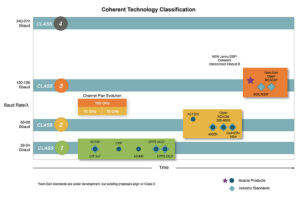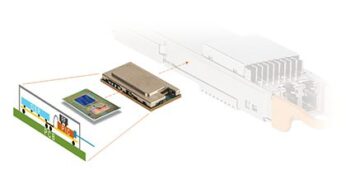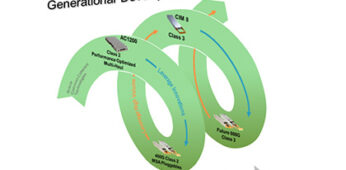Introduction
Building out a network to meet growing bandwidth demand can be full of challenges. One important challenge is supporting different hardware platforms for different segments within a network operator’s infrastructure. Performance-optimized multi-haul coherent optical technology addresses this challenge because it provides maximal application flexibility by utilizing a single coherent module to cover transmission distances from across town to across the ocean. That’s why many network operators today are utilizing multi-haul coherent as an essential technology for deploying core/transport networks to collectively support DCI, metro, long-haul, and subsea applications. This blog is the first of a three-part blog series describing the state of coherent technology and how multiple trends point to silicon photonics as the path forward for evolving to higher data-rate transmission in performance-optimized multi-haul solutions.

Coherent Technology Evolution
We begin our series by reviewing the state of the industry and its impact on the evolution of coherent technology for supporting high speed optical transmission.
Multiple factors such as required bandwidth, technology capabilities, scalability, and cost should be considered by the industry to reach consensus on the next transmission data rate. These factors are explored and debated before investing dollars and resources into developing the solutions for the next generation. Ethernet, the dominant client protocol traffic type, has recently moved beyond 100 gigabit Ethernet (GbE) to current implementations at 400GbE, looking ahead towards 800GbE. To support these client traffic rates, coherent solutions also should provide optimal transport solutions for different distance applications with cost-efficiencies.
To achieve a targeted data rate over a single carrier, coherent designs utilize two key variables: modulation order and baud rate. To transport 400GbE over DCI and metro links, industry consensus focused on utilizing 4 bits/symbol (~16QAM) at the Class 2 baud rate of 60-64Gbaud (corresponding to a 400G line rate). This allowed the design to meet the reach requirements for high-volume DCI and metro applications. As I expand on later in this blog series, this consensus is an important “stake in the ground” with respect to scaling to future coherent solutions and network architectures as bandwidth and client requirements continue to increase.

A Shift in Focus
Much has been written about how coherent DSP with algorithmic advancements over the years have resulted in narrowing the gap to the Shannon limit, the theoretical maximum information capacity within an optical channel. While each generation introduces innovations to improve performance, as the gap to the Shannon Limit narrows, the additional capacity achieved from digital signal processing power is becoming smaller. Thus, the industry has shifted its focus to increasing the baud rate per carrier, while also introducing performance-improving innovations, to enable end-users to achieve cost-efficiencies as bandwidth demand continues to grow. Newly introduced Class 3 120+Gbaud solutions based on silicon photonics offer a path to cost-effectively double capacity over a single carrier compared to current Class 2 implementations.
Moore’s Law
While the Shannon Limit informs us as to the maximum capacity allowed in an optical channel, the equally important Moore’s law predicts the trend for semiconductor industry transistor density to double approximately every two years helps to predict how coherent DSPs shrink in size and power consumption. This helped usher in generation after generation of increased functionality, size-reduced DSPs that can be leveraged for not only small sized transceiver form factors but also to support increasingly sophisticated algorithms for performance-optimized multi-haul transmission.
Photonic Integration
In 2014, Acacia introduced the first pluggable coherent module (CFP form factor) which laid the groundwork for future smaller pluggable modules, including the CFP2 and QSFP-DD multi-source agreement (MSA) form factors. Silicon photonics (SiPh), which uses semiconductor design tools and processes, played a key role in this evolution because of the benefits in size, power, cost, and yield. The miniaturization of the coherent DSPs along with SiPh technology enabled co-packaged designs to fit inside these compact MSA pluggable form factors. Performance-optimized multi-haul coherent solutions based on SiPh were able to leverage these miniaturized designs as well as silicon manufacturing processes.
These technology trends inform our decisions when we make investments in next generation coherent technology. One of Acacia’s strengths has been our ability to recognize technology shifts starting with the adoption of coherent to silicon photonics and pluggable DCO modules. We believe that a roadmap that is aligned with industry trends can best help network operators meet their growing bandwidth demands.
Learn More About the Considerations Driving Next Generation Multi-Haul Solutions


